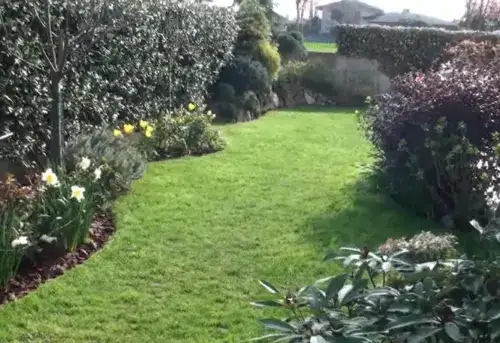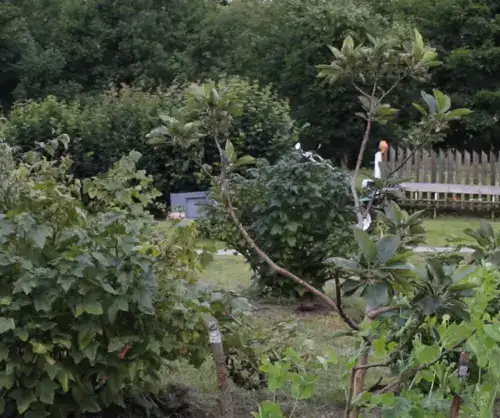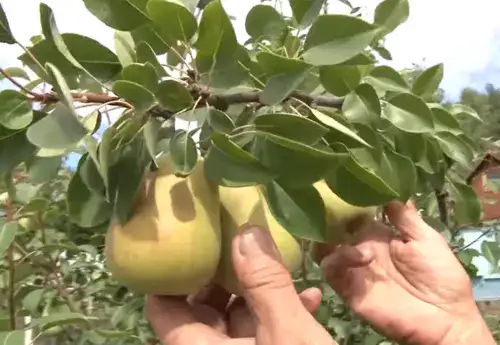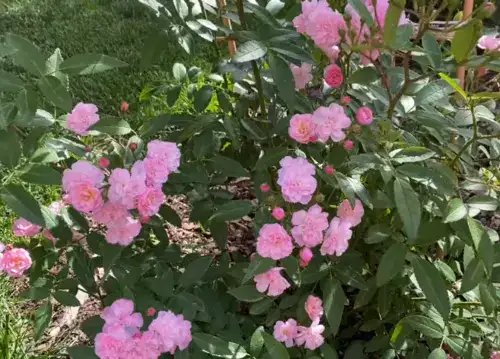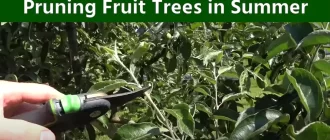A small garden is not a reason for serious restrictions in the design of the garden. And yet, the design of 6 acres (or less) has its own subtleties. Let’s figure out what to consider when choosing plants for a small plot.
The main thing in planning the design of a small plot – think for the future and take into account how big and tall the plant will be many years later. It is just as important not to plant too much: If you can’t wait to fill the distance between the flowers in the bed, it is better to mulch the soil with decorative mulch.
Trees and shrubs on a small garden: How to choose?
Among the variety of trees, it is sometimes difficult to opt for one thing. But if the area of your plot is 6 hectares or less, the circle is significantly narrowed. Let’s list the main points that are important to pay attention to when planning plantings on a small plot.
Plant height. Lack of light and limited space forces the tree to grow even more vigorously to gain access to vital resources.
For example, pine, oak or spruce can grow up to 165 ft in height, birch up to 140 ft, linden up to 132 ft.
Take into account the proximity of power lines: it is better to plant shrubs or low trees under them.
Keep in mind that tall trees need to be pruned regularly: the first procedure is carried out 2-3 years after planting the tree.
Crown diameter. This is also an important parameter: If the degree of crown growth of even a low-growing tree is not taken into account, it can close the passage between the trees in the future. This will be a problem if the trees are planted along garden paths.
Since shrubs, by virtue of their structure, often have a wider base in diameter than the trunk of a tree, it is also not advisable to plant them close to garden paths. Densely planted shrubs can be used as a hedge.
Root outgrowth. As a rule, the diameter of the root system is equal to the diameter of the crown of the tree. If you do not provide enough space for him when planting a seedling, the grown roots can prevent the growth of neighboring plants: the real struggle for survival will begin.
With shrubs, note that they will outgrow roots after a while. Sea buckthorn, plum and willow are particularly active. Remove unwanted shoots in good time.
Here is an approximate plan of how many trees and shrubs you need on the plot, showing how much area they occupy:
| Plant name | Number of bushes/trees | Occupied area, sq.ft. |
| Redcurrant | 2 | 65 |
| Blackcurrant | 4 | 130 |
| Gooseberry | 2 | 32 |
| Raspberry | 20 | 215 |
| Apple Tree | 4 | 860 |
| Pear Tree | 2 | 430 |
| Plum Tree | 2 | 430 |
| Cherry Tree | 2 | 430 |
To prevent the roots from damaging nearby structures, plant trees at least 3 m away from the fence and 5 m away from any buildings.
Note also that the roots of a tree can break a paved path, so plants with strong surface roots should be planted away from paths.
Shading. The sprawling, dense crown casts shade, so crops growing under the tree should be as shade-tolerant as possible.
The shade from a shrub, though not as great as the shade from the crown of a tree, is still denser, which further shades the space under the shrub.
Water balance. As you know, the moisture of the air and the water balance of the soil on the site is influenced by plants. Trees with large leaves contribute to the evaporation of a large amount of moisture, which means that the soil is strongly drained. Consider this fact when choosing a tree to plant on a plot with dry soil.
To summarize:
- give preference to fruit crops: these trees are not too tall, also you will be able to shape the plants by pruning;
- choose low- and medium-height varieties of trees and shrubs: spherical forms of Thuja (Globosa, Danica), Thuja Little Champion, Compacta or slow-growing species;
- for a small plot, trees of weeping and boulder forms are excellent – artificial grafting will prevent them from growing too tall;
- Plant shrubs that form a minimal amount of shrubs.
Design a small garden: flower bed
It would seem that there can be no problems with the design of flowerbeds on a small garden plot – after all, flowers – plants are more compact than trees and bushes. But there are a few points to which you should pay attention.
Observe the proportionality. Plants in a flower bed should blend together beautifully in scale. If you prefer plants with large leaves, plant a few small-leaved flowers next to them. This will make the bed look harmonious by contrasting shapes and textures.
Massive and large-leaved plants on a small plot should be used in very small numbers or abandon the idea altogether. Here are some large perennials that are appropriate for a small garden:
- peony;
- iris;
- rose;
- Dicentre (large varieties);
- lilac.
Create accents. With the help of large plants, presented above, you can create bright accents in the garden. To make the plant stand out in the flower bed even more spectacular, plant small species near it for a background.
Tiered placement. Plants planted in tiers are a great option for decorating a flower bed in a small garden. This way of placing flowers will improve the view of the site, making the garden more picturesque. The principles of tier planting can also be used for trees and shrubs.
To summarize:
- Choose medium- and low-growing perennials, such as miniature (up to 10 cm in height), small (up to 8 in) and medium (up to 12 in) varieties of hosta;
- tall plants (delphiniums, mallows) near walls and hedges;
- Plant small-leaved plants with small flowers: they are good for a meadow flower garden, and for a background (when planted together with large species).
How to decorate a small garden?
And in a garden of small size, you can safely use current landscape design techniques.
- Create a hedge with the help of climbing plants on trellises. Also the role of a green screen can play the role of densely planted shrubs.
- Divide your garden into zones by using borders. To do this, zone the space by planting shrubs in 1-2 rows:
- large perennial plants: lilies, peonies, roses;
- shrubs: dwarf forms of spirea, penta, henomeles.
- Solitary plantings – an effective way to create an accent in the garden. For solitary planting, choose bright large perennials. Place the solitaire on the plot so that there is an open space around – this will enhance the accent.
The main advantage of a small garden is its cozy charm. When you think about how to arrange the plant elements on the garden plot, and what kinds of plants to give preference, you will get a unique and harmonious garden.

